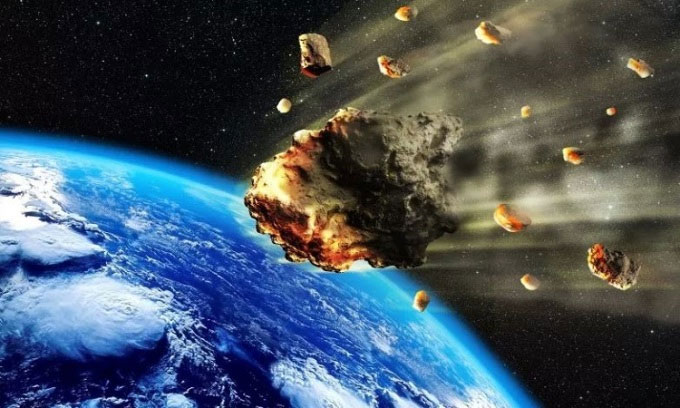A giant asteroid with a diameter of approximately 305 – 740m will fly close to Earth on November 1st.

Simulation of an asteroid flying past Earth. (Image: iStock)
The asteroid named 2022 RM4 is moving at a speed of 84,490 km/h and is expected to pass Earth at a distance of 2.3 million km. In comparison, the Moon is 384,472 km away from Earth, and the nearest planet, Venus, is located 61 million km away.
Despite flying relatively close to Earth from an astronomical perspective, the likelihood of this asteroid colliding with Earth is very low. Researchers have measured the orbit of 2022 RM4 and determined that it will pass by Earth in November 2095 but will still be at a distance of 0.01 AU (equivalent to nearly 1.5 million km). New facilities such as the Vera Rubin Observatory in Chile can help refine surveys of large near-Earth asteroids like 2022 RM4. According to Gretchen Benedix, a planetary geologist at Curtin University, the odds of an asteroid like 2022 RM4 hitting Earth are 1 in 100,000 years, depending on its size.
The impact effects from a collision with an asteroid vary greatly based on size, speed, and angle of impact with the ground. In the case of an asteroid the size of 2022 RM4, the damage would be immense. A 740 m rocky asteroid would strike the Earth’s surface with energy equivalent to 30 million tons of TNT, creating a crater 10 km wide and causing a 7.6 magnitude earthquake.
| Asteroids are small celestial bodies orbiting the Sun. NASA estimates there are 1,113,527 asteroids in the solar system. They orbit the Sun and are primarily concentrated in the asteroid belt between Mars and Jupiter. However, due to their relatively small size, asteroids are easily influenced by gravity and can have orbits that intersect with the orbits of planets, according to Jay Tate, director of the Spaceguard Center in the UK. Most asteroids range in size from 10m to 529km. |


















































